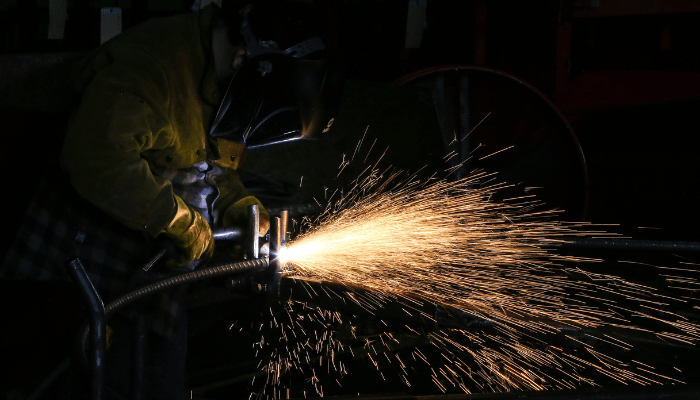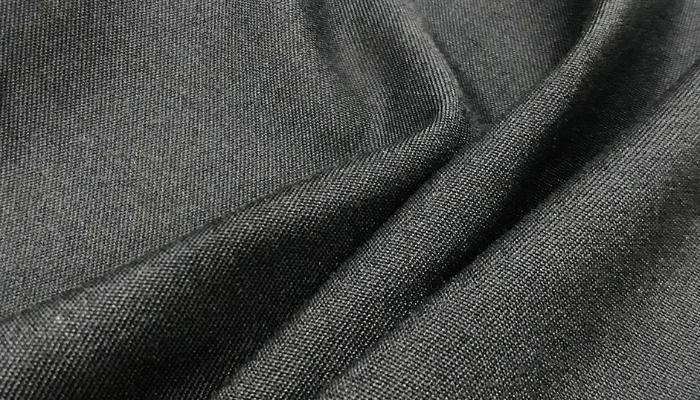As someone working in an industrial setting, you are likely aware of the constant risk of fire. Flammable materials, chemicals, electricity, and high temperatures all contribute to hazardous situations. Industrial fires can cause property damage, injuries, and even loss of life.
To prevent such dangers, fire retardant fabrics are essential for protecting both workers and equipment. These fabrics are specifically designed to resist high temperatures and inhibit the spread of flames. In this article, we will explore the importance of fire retardant fabrics in ensuring industrial safety.
Types & Applications of Fire Retardant Fabrics for Industrial Safety
Fire retardant fabrics are essential in industrial settings to ensure the safety of workers. Below are some of the most common types of fire retardant fabrics used in various industrial settings:
Flash fire resistant fabrics
Flash fire resistant fabrics protect workers from sudden and fast-spreading flash fires. These heat-resistant materials, typically made from Para-aramid or Meta-aramid, possess exceptional fire-retardant and heat-resistant properties. Industries that deal with flammable materials, such as the oil and gas industry, frequently employ non-flammable fabrics for FR clothing.
Welding resistant fabrics
Welding is a prevalent procedure in several industries. The high temperatures present in the work environment can create sparks and spatter, posing a risk. Typically, fabrics that resist welding are made from materials such as leather or treated cotton, which can protect workers. These fabrics are usually utilized in welding jackets, gloves, and aprons. Another alternative is to choose inherently fire retardant fabric for jumpsuits, shirts, and bottoms, which extends their lifespan.
Arc flash resistant fabrics
When an electrical fault occurs, the release of energy can cause arc flashes that affect a wide range of areas. Workers require protective clothing that covers large skin areas to safeguard them from high temperatures and potential electrical shock. Arc flash-resistant fabrics, including flame-resistant fabrics, are designed to offer protection in such situations. Para-aramid or Meta-aramid fire retardant fabrics have additional features that can withstand the heat and energy of an arc flash.
Molten metal resistant fabrics
Non-flammable fabrics are one of the features of molten metal resistant fabrics that protect workers in hazardous industrial settings where molten metal splashes and spills are common, especially in foundries and metalworking plants. These fabrics are usually made from leather or fire retardant fabric, protecting against molten metal hazards.
Industrial Safety Fabrics Comparison
| Fire Retardant Fabric Types | Applications | Materials Used |
|---|---|---|
| Flash Fire Resistant Fabrics | Protects workers from sudden and fast-spreading flash fires | Para-aramid or Meta-aramid |
| Welding Resistant Fabrics | Protects workers from sparks and spatter in welding | Leather or treated cotton |
| Arc Flash Resistant Fabrics | Protects workers from high temperatures and potential electrical shock during an electrical fault | Para-aramid or Meta-aramid |
| Molten metal resistant fabrics | Protect workers from molten metal splashes and spills | Leather or fire retardant fabric |
Fire retardant fabrics are essential in various industrial settings to protect workers from potential hazards like fire, heat, chemicals, and molten metal. The choice of fire retardant fabric depends on the specific requirements of the application, such as the type of hazard, the level of protection needed, and the desired level of comfort and breathability.
Testing and Certification of Fire Retardant Fabrics
Here are four crucial certifications that we can check the quality of fire resistant textiles
ISO 11611:
This standard specifies the minimum requirements for protective clothing for welding and allied processes. The fabric is tested for its ability to withstand flame spread, ignition, and heat transfer.
ISO 11612:
This standard specifies the performance requirements for protective clothing against heat and flame. The fabric is tested for its resistance to flame spread, heat transfer, and molten metal splash.
NFPA 70E:
This standard is used in the United States to evaluate the safety of employees working with electrical equipment. The fabric is tested for its ability to withstand arc flashes, electrical shock, and fire hazards.
NFPA 2112:
This standard is used in the United States to certify the flame-resistant properties of fabrics used in protective clothing for industrial personnel exposed to flash fires. The cloth must process several tests for its ability to resist ignition, flame spread, and heat transfer; it must also accept the most representative ASTM F1930 mannequin test.
| Certification | Purpose | Testing Criteria |
|---|---|---|
| ISO 11611 | Protective clothing for welding and allied processes | Flame spread, ignition, and heat transfer |
| ISO 11612 | Protective clothing against heat and flame | Flame spread, heat transfer, and molten metal splash |
| NFPA 70E | Evaluate safety of employees working with electrical equipment | Arc flashes, electrical shock, and fire hazards |
| NFPA 2112 | Flame-resistant properties of fabrics used in protective clothing for industrial personnel exposed to flash fires | Ignition, flame spread, heat transfer, and ASTM F1930 mannequin test |
Testing and certification of fire retardant fabrics is the first step in selecting suitable fire retardant cloth for specific industrial applications. Ensuring the fabric meets safety requirements and standards is important to protect people from potential danger and fire hazards.
Next are some tips to properly care for and maintain fire retardant fabrics to maximize their effectiveness and lifespan.
4 tips to care and maintenance of fire retardant fabrics
Proper care and maintenance of fire retardant fabrics are essential to ensure that the fabric maintains its flame-resistant properties and longevity. Here are some tips for the care and maintenance of fire retardant fabrics:
By following these care and maintenance tips, fire retardant fabrics can remain effective in protecting against fire hazards and prolong their lifespan.
- Avoid using bleach or other harsh chemicals that damage the fabric's fire-resistant properties.
- Avoid exposing the fabric to direct sunlight for prolonged periods, as it can cause fading and reduce its fire retardant properties.
- Inspect the fabric regularly for any signs of wear and tear or damage. Repair or replace the fire retardant clothes as needed.
Sunny special Suggestion:
You also can choose inherent fire retardant fabric; the fire retardant property is built into the material so that you can take care of your fire retardant clothes easily.
Conclusion
Fire retardant fabrics play a critical role in protecting workers from fire hazards in industrial settings, offering specific protection against flash fires, welding, arc flashes, and molten metal. Testing and certification ensure that these fabrics meet safety requirements and standards, and proper care and maintenance are necessary to maintain their fire retardant properties.
While machines have replaced many hazardous tasks, humans remain responsible for protecting their loved ones' lives. Industrial safety is a shared goal globally, and a clear understanding of flame-retardant fabric application is essential for effective protection. For more information on our flame-retardant fabric solutions, please visit our website Sunny special - Safety Protection.
- Tags: Safety Protection, Workwear Fabric
You may also like









